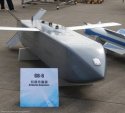The H-6? Not even close to US mainland. That's not the parallel with B-52. I'm referring to the constantly upgrading antique airframes with modern radars, sensors, comm tech, electronics etc. The modern H-6's internals are lightyears ahead of the Tu-16 or the earlier H-6s.
PLA needs something a class or two heavier than the JH-7A for air launched ordinance that J-16 and JH-7A cannot handle. These include air launched cruise missiles, heavier YJ series anti-surface, air launched ballistic missiles. The H-6 also has far superior payload capacity and range. Nothing else in PLA covers these capability gaps so the H-6 continues receiving upgrade developments, funding, and orders. At least until replacements are in production.
It's not about reaching US mainland. China has no real capability to attack the US and really would have no benefit in doing such a thing even if the capability is there. The H-6 is now a core part of China's defensive tactics in the SCS and western Pacific. They can also reach US bases in the region. If we're talking about MAD, China relies on ballistic missiles, HGVs, and SSBNs. It really needs to stockpile huge numbers of these to remove American hawks even entertaining the idea of preliminary strike. At the moment its ICBM and warhead numbers may be a little precarious. PLAN's SSBN numbers are also pathetic compared to the US but commensurate with other major nuclear powers. Obviously PLAN is waiting for 096 paired with improved JL-3s. JL-3s are impressive and ready like the DF-41 but China needs a lot more SSBNs and HGV equipped warheads or other MARVs (delivers superior results and survivability compared to MIRVs).
The H-6 itself isn't all that impressive even considering the upgrades but its utility is valuable.
There is more to the H-6K than modern electronics. It uses a turbofan engine which is like two decades more modern than the original turbojets. The engine has much lower fuel consumption and more dry thrust which means the aircraft has more range and can carry more payload. The airframe itself is made with more modern composite materials and hence lighter. The long distance strike and nuclear variants of the modern H-6 have in-flight refueling.
So the modern H-6 can hit targets in the second island chain and likely beyond. I would not be surprised if the sensors were able to target surface ships with cruise missiles at long distances. Absent something like the Tu-22M3 it is the next best thing and is quite likely a relatively cheap aircraft to build considering its capabilities. It basically uses the same engine as the Y-20, the D-30, and supposedly the Chinese have recently cloned this engine as the WS-18.




